Problems caused by low-quality plastic gears
27 May 2024
In a previous news article, we clarified the concept of quality in relation to plastic gears. We defined what it depends on and what instruments are suitable for certifying the degree of precision achieved. In this new article, we will instead take a look at what problems a low-quality technopolymer transmission element or gear can cause.
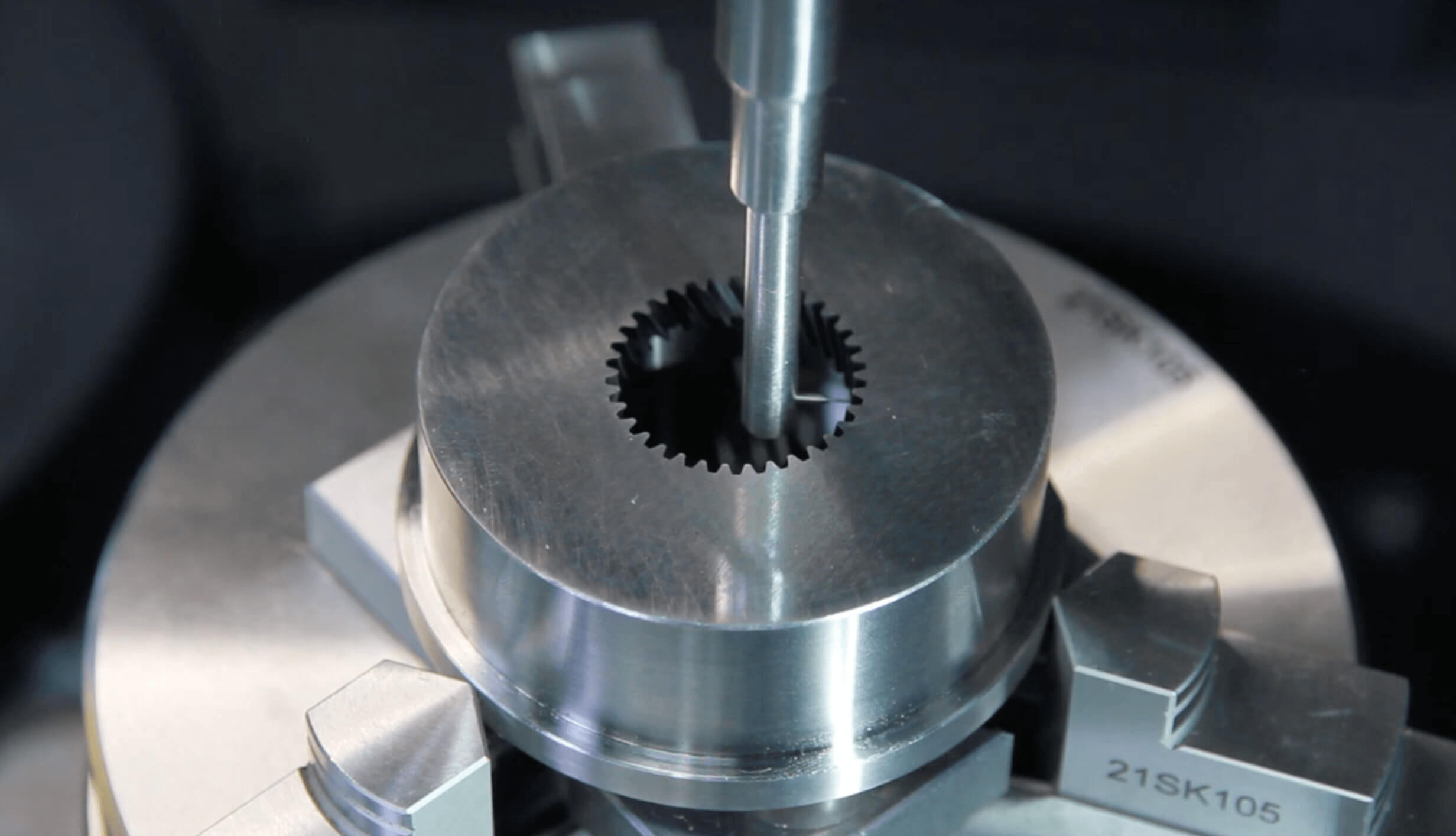
Common errors in plastic gear manufacturing
Careless and imprecise production can clearly result in the poor quality of the gears produced. Manufacturing errors in plastic gears affect a number of interconnected factors leading to a decline in mechanical properties.
Stagnoli has conducted numerous studies and tests over recent years in order to evaluate the stress development of a gear as a function of tooth bending during meshing. An ideal model of a gear with perfect geometry was compared with gears whose degree of precision ranged from grade 8 to grade 12.
It was observed that, from grade 10 and upwards, meshing involves only one tooth instead of two, as was the case in the ideal model. It should be borne in mind that the greater the number of meshing teeth, i.e. the greater the overlap factor, the better the load distribution and thus the lower the stress on the individual tooth.
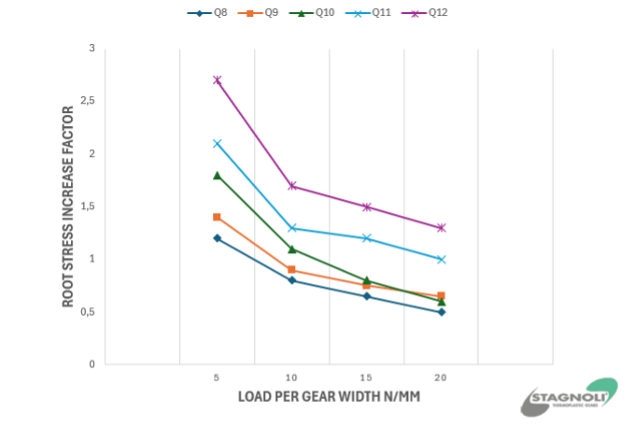
As shown in the diagram, improving gear quality from Q12 to Q11 will have a substantial effect on stress reduction compared to improving gear quality from Q9 to Q8.
The quality of the gear also affects heat generation and the corresponding operating temperature of the plastic gear, as shown in the following diagram. When compared to a grade 10 gear with the same rotational speed and subjected to the same load, the grade 12 gear has a more abrupt temperature rise and a development of approximately +10° C.
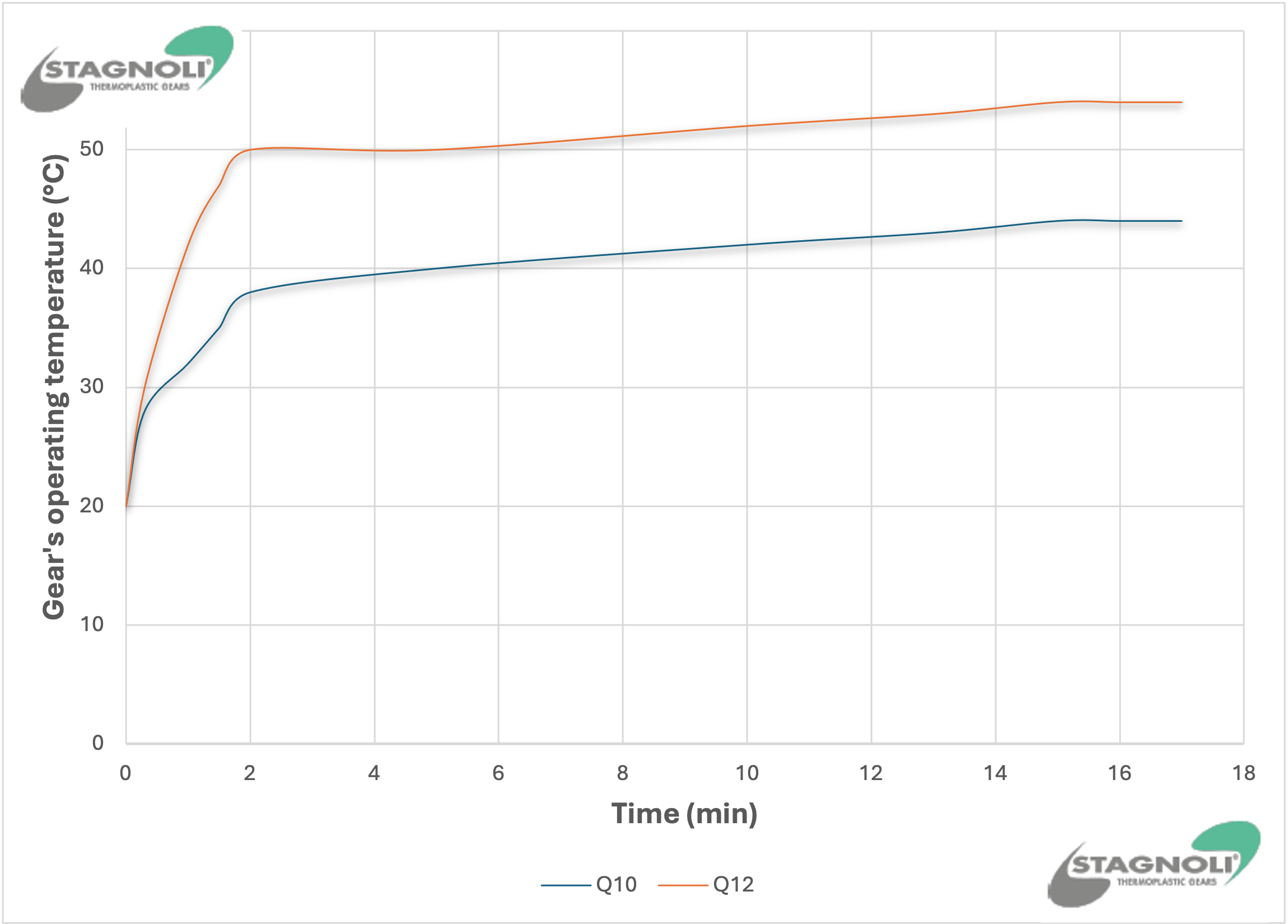
Noise level of poor quality plastic gears
Another aspect not to be overlooked when assessing the quality of a plastic gear is noise level. A low-quality gear obviously has a higher noise level and this is reflected in gearing errors resulting in an increased level of vibration. The graph below shows the decibel levels reached when analysing two gears rotating at the same speed and subjected to the same load.
Under these specific conditions, it can be seen that the difference between a quality 10 gear and a quality 12 gear is approximately 5 dB: the noise level is therefore three times lower, as the dB scale is a logarithmic scale.
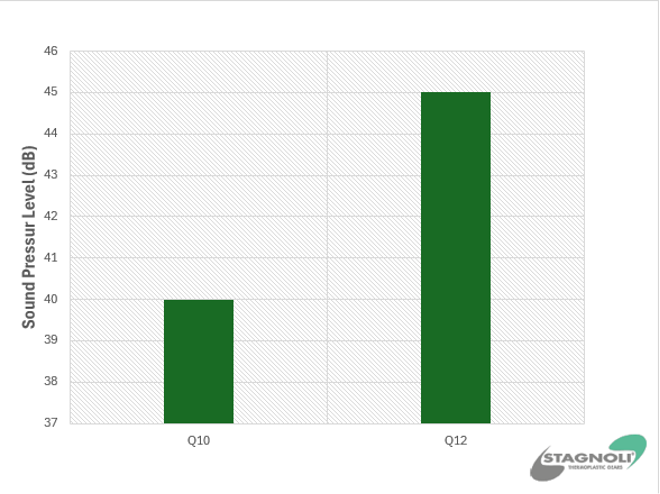
The main problems of low-quality plastic gears
To sum up, the biggest problems that a low-quality gear can cause are:
- Gearing errors with increased mechanical stress on a single tooth;
- Increase in temperature with consequent decline of mechanical properties;
- Increased noise.
High-precision gear solutions
In recent years, the research for and development of new design solutions for plastic transmission elements and the manufacture of toothed dies and moulds have led to results ranking below quality 10.
The following report shows that the cumulative pitch deviation falls within grade Q7. This quality is comparable to a precision steel gear. With plastic gears, therefore, we at Stagnoli are not only able to guarantee these high quality standards, but also maintain and certify them with reports for each production batch. This fundamental aspect for troubleshooting problems and errors in existing customer projects and products has allowed us and continues to allow us to stand out from most competitors.
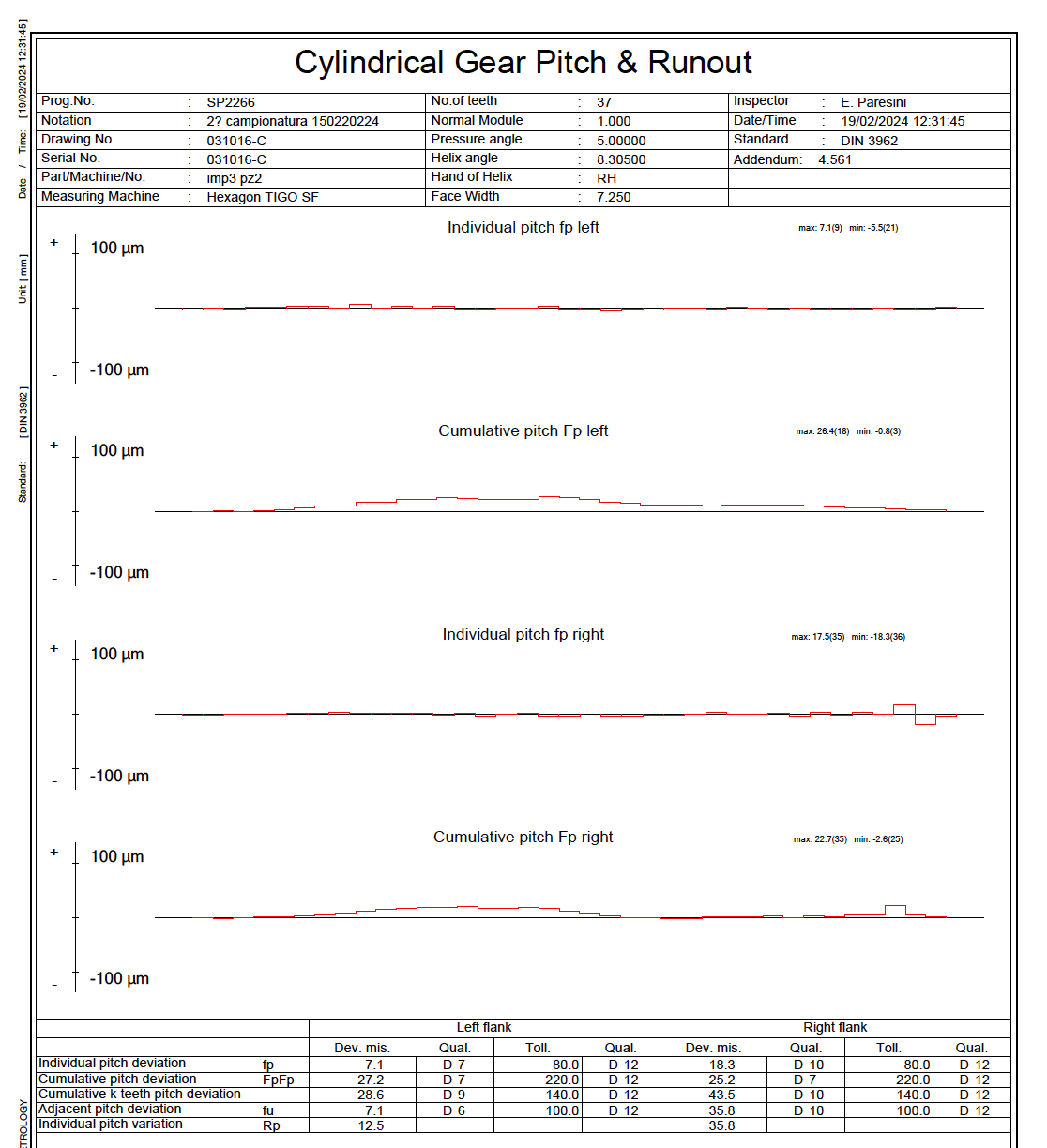
Stagnoli is committed to offering high-level technical solutions and guaranteeing high, certified quality standards, confirming its position as a leader in the plastic gear industry. If you are looking for a reliable partner for the development of technopolymer gears, contact us and tell us about your professional needs.
NEXT NEWS
28 March 2024